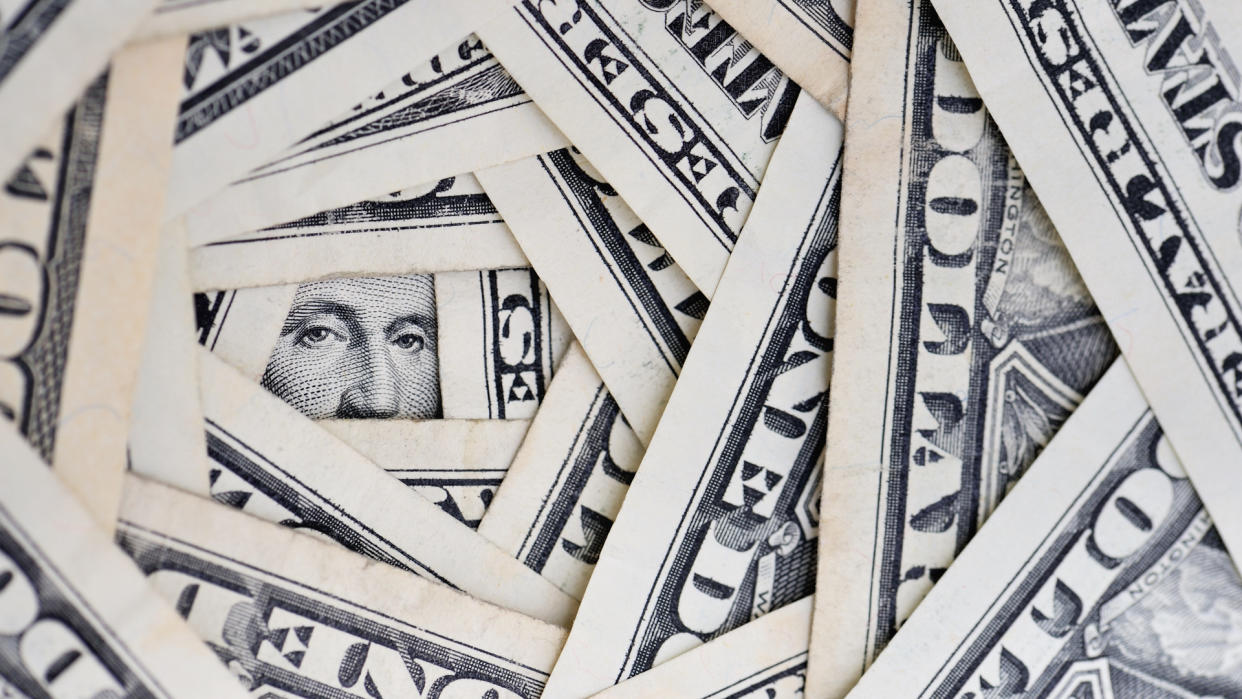4 Most Popular Currency Misprints and How Much They Are Worth

Errors are rarely something to smile about — unless you collect currency. The Bureau of Engraving and Printing rarely makes mistakes, and when it comes to collectibles, rarer is better.
$2,000 Quarter? Check Your Pockets Before You Use This 2004 Coin
Next: How To Build Your Savings From Scratch
Human error, mechanical error and miscommunication have occasionally resulted in incorrect, mismatched or otherwise misprinted currency. And if you find a mistake on any of your bills or banknotes, you should immediately set them aside for appraisal.
For a better idea of what to look for, keep reading to learn about the most popular currency misprints in history and how much they are worth.
1974 $1 Federal Reserve Inverted Overprints
$500
The legendary 1974 $1 inverted overprints are not the most valuable error bills you can find, but they are certainly among history’s most popular.
Philadelphia numismatist Harry J. Forman discovered the first 30-note error sequence in a 4,000-note brick in October 1976. They contained a black Federal Reserve seal and numbers, and a green Treasury shield and serial numbers printed upside down.
By the time Coin World reported on Forman’s findings one month later, hundreds of copies were confirmed and a steady stream emerged over the next few months, making it the largest population of error currency ever to enter circulation at the time.
The news sparked a buying frenzy in the numismatic world, and nearly 50 years later, enthusiasts are still building sequentially complete collections of 1974 $1 inverted overprints. According to Coin World, you can expect to pay $500 for a top-condition example.
Take Our Poll: Who Has Given You the Best Money Advice You Have Ever Received?
1934 $10 Silver Certificate With Mismatched Serial Numbers
$25,850
In its April 2017 listing, Heritage Auctions described a very special $10 silver note from 1934 as, “Unique to our best knowledge, and the ultimate star note error we have ever seen or heard of…”
What sets that one apart from the millions like it is its incredibly rare mismatched serial numbers — *00000055A on the left and *00000051A on the right.
No one knows for sure how, exactly, the mistake happened, but Heritage makes an educated guess: “Our surmise here, considering that this error occurred on one of the very first star sheets produced at the Bureau, is that the numbering machine was set incorrectly and the entire first star printing was canceled and destroyed before any of the mismatched notes were released to the public.”
There are no other known examples like it, but if you want to add this one to your collection of error bills or ultra-rare tens, Heritage is accepting offers to the owner of $38,775 or more.
1882 Brown/Black Double Denomination National Bank Note
$70,500
Only two examples of double-denomination $50/$100 Brown/Black national bank notes are known to exist. One, issued by a bank in New Mexico Territory in 1882, is in the American Numismatic Association Museum.
The other — the first to be sold at a public auction since 1945 — was issued by Kansas City’s Aetna Bank. One of the most coveted error bills in America, it sold for $62,500 plus a buyer’s fee in 2017. In 2023, it traded hands again, this time for $70,500.
As for its original 1882 face value, no one will ever know. The bill’s error is a misprint that inked a $50 denomination on the face and $100 on the back.
2013B $1 Star Notes
Up to $150,000
There are a whole lot of misprinted $1 2013B star notes out there, and the Zegers/Winograd project, or Project 2013B, exists solely to match as many of them as possible.
Thanks to an internal miscommunication, the Bureau of Engraving and Printing accidentally produced and circulated 6.65 million pairs of bills with matching serial numbers in 2014 and 2016, and they’ve since become among the most popular and closely tracked misprinted currency in history.
Since every bill must have a unique serial number, they’re all technically counterfeit, but no one knows if they have one. Really, how often do you check the serial numbers on your money? Well, maybe you should start.
You Might Actually Have One — and There Are Ways To Find Its Twin
While 6.65 million pairs of 13.3 million bills sounds like a lot, only nine pairs had ever been matched when one sold for $150,000 a few years back — but a lot has happened since then. As of April 2023, Project 2013B has confirmed 37 matching pairs.
It’s unclear if or how that has changed the value of a set, but Coin World reported that a pair sold for $25,000 in October 2022.
Project 2013B has all the information on how to spot a misprinted serial number. If you find one, scour eBay for a match — people are selling theirs for as little as $20-$30 — and submit your find to Project 2013B. Good luck!
More From GOBankingRates
This article originally appeared on GOBankingRates.com: 4 Most Popular Currency Misprints and How Much They Are Worth
